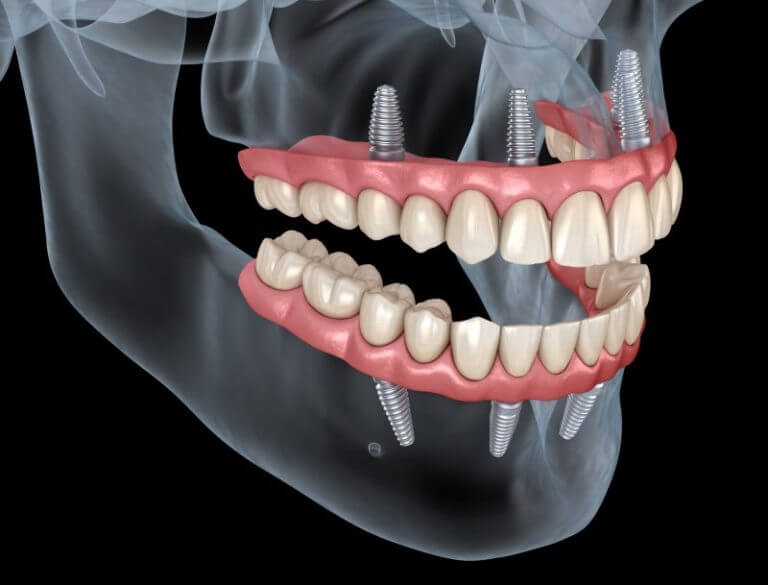What Can You Eat & Drink After All-on-4 Surgery?
If your dentist suggests an All-on-4 surgery, chances are you really need one. After all, they’d only do so when your upper and lower arches are beyond repair. Still, you should know the treatment involves a lengthy recovery with diet restrictions. You’ll thus want to stock the right foods and drinks beforehand. It’s a good thing, then, that a local periodontist is here to help. So, here’s what you can eat and drink as you recover from an all-on-4 implant surgery.
The 1-2 Week Post-Surgery Period
For the first few days and weeks after surgery, much of your facial region – the mouth, the jaw, the throat, etc. – will feel sore. Therefore, normal eating isn’t suggested; it’d be unpleasant at best and delay recovery at worst. Instead, you’ll need to adopt a liquid, non-chewing diet during this time.
You can eat many foods in liquid form over this one to two weeks. For example, you can drink water, tea, coffee, milk, and fruit juices as usual. As for more nutrient-heavy options, consider meal-replacement shakes, smoothies, various soups, etc.
Whatever you do, only have cool liquids for the initial 48 hours post-surgery. You might burn yourself if you have hot ones before the anesthesia wears off.
The 2 Weeks – 3 Months Post-Surgery Period
You aren’t out of the woods even when you reach the end of the two weeks. In the months following surgery, your jaw is still healing, and the implants are still fusing. These things should occur correctly, so keep watching what you eat. For instance, hard, crunchy, or chewy foods should still be on-limits.
That said, you can transition from a fluid diet to a soft food one. Anything mashed or baked, like potatoes, is fair game. Similarly, you can eat soft bread, oatmeal, yogurt, chili, and cheese. Even the smoothies and shakes you had before can be thicker.
Some Tips for Overall Recovery
Try to follow these tips as you recover, regardless of your post-surgery period. They are:
- Use a Blender – You’ll better enjoy the fluid/soft food diet restrictions if you blend some of your favorite food items.
- Be Proactive – Research what you can and can’t eat before surgery. (Make sure to include recipes for different shakes and smoothies.)
- Listen to Your Body – If you feel like you’re not getting enough intake or maybe overdoing it, re-adjust.
An All-on-4 surgery is a big commitment, with diet restrictions to match. After you recover, though, your new smile will make the effort worthwhile!

